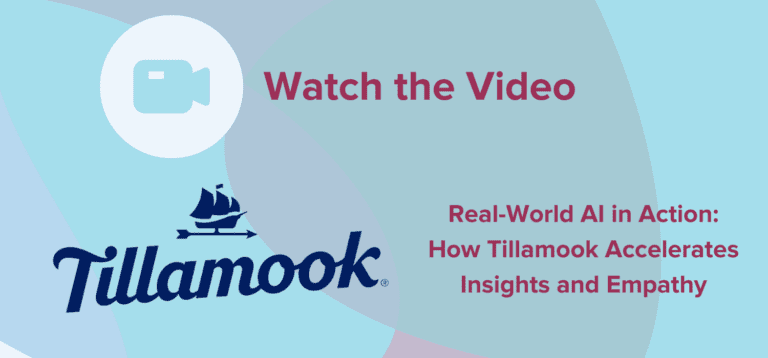By 2025, an overwhelming 80% of customer feedback is expected to be unstructured, encompassing a wide range of sources such as consumer surveys, online reviews, and social media commentary. Given this shift, the question arises: How can businesses leverage this abundance of unstructured text to evolve into more customer-focused and empathetic organizations? The key lies in the transformative prowess of artificial intelligence (AI).
The Roadblock to Consumer Empathy
Consumer empathy, the ability to understand and respond to customer emotions, is undeniably a strategic necessity for organizations today. It’s widely recognized that emotional engagement is a critical determinant of customer choice and loyalty. However, the challenge arises when organizations are faced with the task of deciphering empathy from 80% of their feedback, which is unstructured and often hidden in plain sight.
This problem is well-illustrated by one of the most “structured” forms of unstructured customer feedback: open-ended survey questions. Although these questions make up a small fraction of a typical survey, they offer a powerful platform for respondents to freely express their thoughts and feelings. Yet, despite their potential, even these responses are underutilized as a source of key insights due to the inefficiencies and inaccuracies inherent in text analysis.
Now, consider the vast ocean of customer feedback that exists outside of formal feedback channels, such as consumer reviews, online chat logs, customer support interactions, and social media comments. If the open ends from surveys aren’t being analyzed, these sources don’t stand a chance. In a nutshell, organizations lack the essential tools to decode and utilize one of their most strategically valuable data sets.
Enter AI for Consumer Insights
It’s an understatement to say that artificial intelligence (AI) has captured the current professional zeitgeist, and naturally has leaders in nearly every field of pursuit thinking about the implications for their lines of work. Consumer insights (and its cousin customer experience management) are not immune, and interest in AI for consumer insights is growing. At first glance, generative AI may seem out of place in a discussion of text analysis (which implies understanding text that’s been written by humans), but current large language models (LLM) are nearly as good at comprehending as they are with generating (part of the magic of a ChatGPT is the natural language interface). Additionally, LLMs can be combined with AI-powered natural language processing (NLP) and sentiment analysis to help accelerate the understanding and organization of text. Moreover, the popularization of generative AI has raised awareness about the value and power of unstructured data analysis for business value.
The AI Advantage: Turning Feedback into Foresight
It’s perhaps ironic that the business value of AI for insights is to enable empathy at scale by improving the way organizations understand consumer feedback. But understanding what’s being “said” in unstructured comments alone isn’t enough, organizations need multiple layers of analysis to put what’s being said into context. Context like the emotions being expressed around a topic or experience. Context like the differences between various segments of your audience (or sample). For example, what are the meaningful generational differences between how ad creative is consumed? Or perhaps what are the meaningful generational connections?
So how should insights leaders think about the tangible return on their AI insights investments? In working with hundreds of insights groups, we’ve identified three primary categories of financial value from AI technologies insights:
- Deeper insights and consumer empathy
- Insights productivity (i.e. time savings)
- Data value enhancement
Let’s dig in a little on each of these.
Deeper Insights and Consumer Empathy through text analysis
The saying goes that you miss 100% of the shots you don’t take, but you also miss 100% of the insights you don’t analyze. Because unstructured text has been challenging to analyze consistently at scale, many organizations aren’t using text to generate core insights, instead, they are typically cherry-picking verbatims to add to reports. By lowering the complexity barrier while increasing accuracy and nuance, text can now be viewed as a primary source of insights. In fact, because open-ended responses provide a less restrictive form of feedback, research and CX teams can strategically incorporate more open-ended feedback and potentially reduce survey length and fatigue as a result.
Capturing emotion is another important benefit of AI-powered text analysis. Advanced AI can not only detect positive and negative emotions, they can identify and measure nuanced emotional feedback. The AI can determine that the respondent expressed positive feelings, but also that the product evoked happy memories and nostalgia. This kind of nuanced emotion analysis is particularly valuable for creative and product testing.
The power of analyzing unstructured text really emerges when these lenses of analysis can be combined to reveal how consumers feel, and why. As such, the insights discovery tools to empower the exploration of data are nearly as important as the analysis of the text itself.
Insights Productivity
Any organization that’s “coded” the verbatims from a survey knows how time-consuming and tedious this work can be. If not completed internally, the work is often outsourced to specialist shops, adding time and expense to research cycles. Naturally, this approach isn’t even feasible for very large-scale datasets, like product reviews and even many NPS/CSAT studies that generate thousands or even tens of thousands of responses on an ongoing basis. With this backdrop, the productivity gains from automating the analysis of open-ended text are likely obvious. Users of Canvs, for example, report reducing person-weeks of time to just an hour. But perhaps more importantly, automation tools get your most valuable asset–your people–out of the weeds of reading verbatims and into higher-level analysis of what the text means and what to do about it.
As AI text analysis becomes integrated into the research and/or CX technology stack, previously unstructured text data can be structured into topics, themes and emotions and operate as a “first-class” data citizen for further analysis, like demographic cross-tabs or observing trends over time (via longitudinal tracking studies, etc.). This is where AI starts to impact the value of the underlying dataset.
Data Value
Data has long been called the “new oil” of our modern economy. This analogy is primarily meant to convey that data fuels the engine of decision-making and value creation (the way the “old oil” turned the gears of the mechanical age). But to take the analogy a bit further, AI helps make data a more productive asset by maximizing both access and the decisioning power of data. We’ve already touched on the access issue of unstructured text, where AI expands the available use cases by reducing complexity and time from analysis. But AI, particularly generative AI, is also helping organizations use that data more effectively by providing an intuitive, natural-language interface. AI is supercharging data fuel efficiency.
In practical terms, insights and CX organizations can do more with their consumer feedback, extracting the maximum insights value possible. For example, you can distill the nuance of how customers describe a particular experience or product, ask for structured recommendations from the AI, or even generate buyer personas and new product ideas. You’ve suddenly turned a dataset of unstructured text comments into an interactive customer panel combined with a research analyst.
The Future of Insights: Empathy Elevated
As we move towards a future dominated by unstructured feedback, AI’s role in turning this feedback into valuable insights will become increasingly crucial. Understanding the 80% of consumer feedback that is unstructured unlocks organizations’ ability to achieve consumer empathy. By unlocking the true potential of consumer feedback, businesses can become more customer-centric, responsive, and ultimately successful.
Canvs works with elite insights teams to make consumer empathy a superpower through the magic of AI, and we’d love to work with you. Reach out to learn more and schedule a demo.








